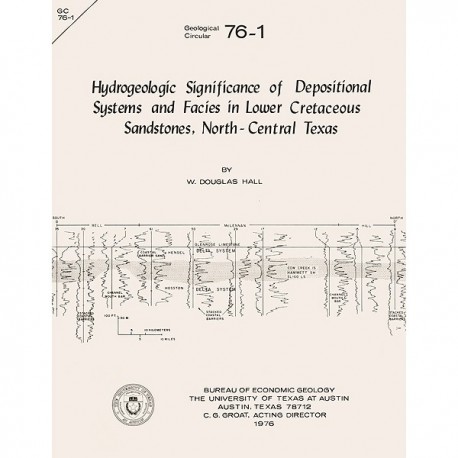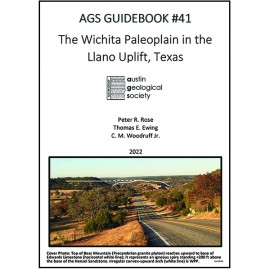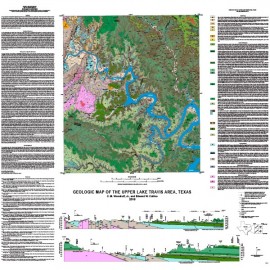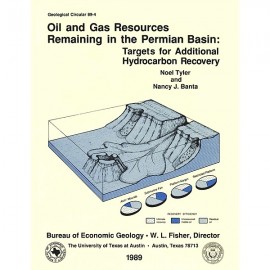Geological Circulars
-
Books & Reports
- Reports of Investigations
- Guidebooks
- Udden Series
- Geological Circulars
- Down To Earth
- Atlases of Major Oil and Gas Reservoirs
- Texas Memorial Museum Publications
- Environmental Geologic Atlas of the Texas Coastal Zone
- Mineral Resource Circulars
- Other Reports
- Seminars and Workshops
- Handbooks
- Submerged Lands of Texas
- Symposia
- Annual Reports
- Open File Reports
-
Maps & Cross Sections
- Thematic Maps
- Miscellaneous Maps, Charts & Sections
- Geologic Atlas of Texas
- STATEMAP Project Maps
- Geologic Quadrangle Maps
- Cross Sections
- Highway Geology Map
- Energy and Mineral Resource Maps
- Shoreline Change and Other Posters
- Wilcox Group, East Texas, Geological / Hydrological Folios
- Bouguer Gravity Atlas of Texas
- River Basin Regional Studies
- Featured Maps
- Posters
- Teachers & the Public
-
Geological Society Publications
- Gulf Coast Association of Geological Societies
- Alabama Geological Society
- Austin Geological Society
- Corpus Christi Geological Society
- Houston Geological Society
- Lafayette Geological Society
- Mississippi Geological Society
- New Orleans Geological Society
- South Texas Geological Society
- GCS SEPM Publications
- Historic BEG & UT Series
Hydrogeologic Significance of Depositional Systems and Facies in Lower Cretaceous Sandstones, North-Central Texas
GC7601
A free, digital version of this publication can be found on: Texas ScholarWorks
GC7601. Hydrogeologic Significance of Depositional Systems and Facies in Lower Cretaceous Sandstones, North-Central Texas, by W. D. Hall. 29 p., 19 figs., 2 tables, 1976. ISSN: 0082-3309. Print.
To purchase this publication as a PDF download, please order GC7601D.
ABSTRACT
The Lower Cretaceous Hosston and Hensel Sandstones are important sources of ground water in North-Central Texas. Delineation of major depositional systems and their component facies within these formations provides a method for predicting the quantity, movement, and chemical composition of water in the aquifers.
The Hosston and Hensel Sandstones were deposited during minor reversals of marine transgression onto the Texas craton by Comanchean (Lower Cretaceous) seas. A net sandstone map of the Hosston Formation shows two major depositional trends: (l) a dip-oriented (west-east) meanderbelt fluvial system, strongly influenced in the west by relief on the underlying Wichita paleoplain, which supplied sediment to (2) a strike-oriented (north-south) high-destructive, wave-dominated delta system overlying the Ouachita foldbelt in the east. The Hensel deposits prograded eastward across the relatively featureless upper surface of the Pearsall Formation, forming two depositional systems similar to those of the Hosston.
The meanderbelt sandstone facies of the fluvial systems and the coastal barrier facies of the delta systems are thick, laterally persistent sandstone bodies capable of supplying greater amounts of ground water than the flood basin, lagoon-marsh- embayment, or prodelta-shelf facies, which are composed principally of mudstone and siltstone. Regional ground-water movement in both formations is to the southeast with hydraulic gradients of 10 to 15 feet per mile (2 to 3 meters/kilometers). Transmissivity averages 8,000 gallons per day per foot (1.2 liters/second/meter) in the Hosston and 5,000 gallons per day per foot (0.7 liters/second/meter) in the Hensel. Hydrochemical facies of water in the Hosston and Hensel Sandstones coincide with the principal lithogenetic facies of the two depositional systems. Ground water is dominantly of the calcium magnesium bicarbonate type in the fluvial system but changes downdip to sodium sulfate and sodium bicarbonate types in the delta systems, indicating a change in conditions of chemical equilibrium.
Keywords: depositional systems, facies, geochemistry, ground water, Hensel Sandstone, Hosston Sandstone, Lower Cretaceous, North-Central Texas, Texas
Citation
Hall, W. D., 1976, Hydrogeologic Significance of Depositional Systems and Facies in Lower Cretaceous Sandstones, North-Central Texas: The University of Texas at Austin, Bureau of Economic Geology, Geological Circular 76-1, 29 p.






